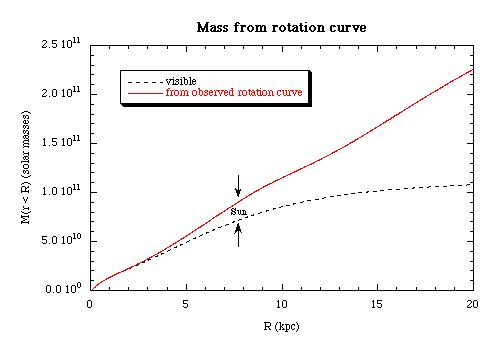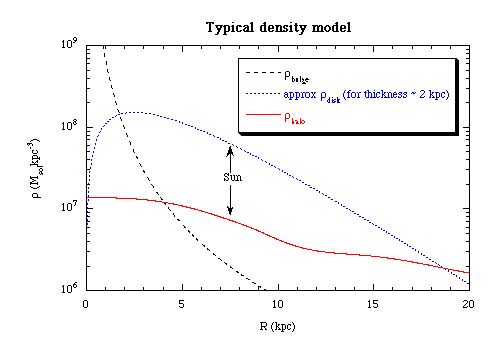UKDMC Home Page
Galactic rotation curves.
UKDMC Intranet
UKDMC Home Page |
Galactic rotation curves. |
UKDMC Intranet |
The red-shifts of spiral galaxies which are sufficiently `edge-on' to us vary across the galactic disk (for example, NGC 5746), because the galaxies are rotating. As the galaxies are held together by their own gravity, we can calculate how the rotation velocity should vary with distance from the galactic centre, in the same way as we calculate planetary motion around the sun. The results of such calculations consistently differ from what is seen - observed `rotation curves' vary much less, as shown below for our galaxy1; the approximate location of the sun (7 to 8 kpc from the galactic centre) is also shown.

The observed rotation curves imply that there is more mass than can be seen, and that much of this `dark matter' is at large distances from the galactic centre: its distribution is very different to that of the visible matter.

If the dark matter `halo' is approximately spherical, its local density can be estimated. A typical estimate1 is shown below, together with estimates of the density of the visible matter.

1: Plots shown here are derived from the density model of J. A. R. Caldwell and J. P. Ostriker, Astrophys. J. 251 (1983) 61-87. Nick Strobel's Astronomy Notes contain similar (but presumably more accurate) rotation curves derived from observations.
![]()
Back to UK Dark Matter Collaboration home
page. ![]()